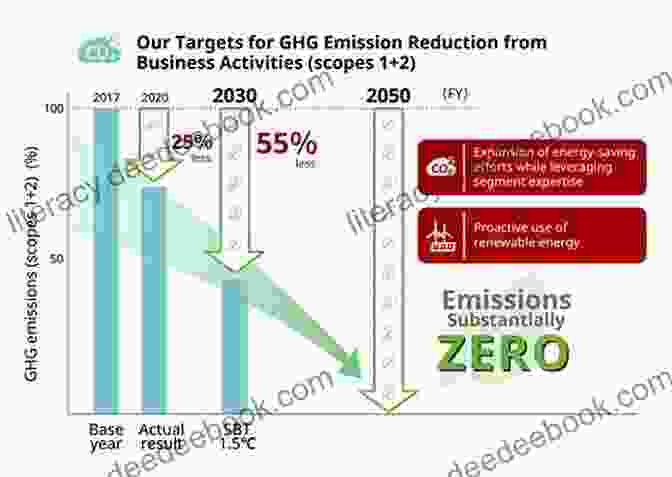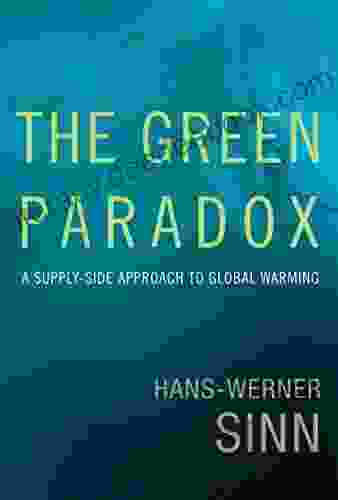Supply Side Approach to Global Warming: A Comprehensive Analysis

Global warming, an urgent threat to our planet and its ecosystems, demands innovative and comprehensive solutions. The supply side approach, gaining increasing attention, offers a unique perspective on mitigating climate change by targeting the sources of greenhouse gas emissions. This article delves into the intricacies of the supply side approach, exploring its key concepts, impacts, and potential implications for addressing climate change.
4.2 out of 5
| Language | : | English |
| File size | : | 2722 KB |
| Text-to-Speech | : | Enabled |
| Screen Reader | : | Supported |
| Enhanced typesetting | : | Enabled |
| Word Wise | : | Enabled |
| Print length | : | 357 pages |
Key Concepts of the Supply Side Approach
The supply side approach focuses on reducing greenhouse gas emissions at their source, rather than relying solely on reducing demand. It involves implementing measures that directly target the production and supply of fossil fuels, industrial processes, and other human activities that release carbon dioxide and other greenhouse gases into the atmosphere.

Carbon Capture and Storage (CCS)
CCS involves capturing carbon dioxide from industrial processes or directly from the atmosphere and storing it underground in geological formations or deep ocean reservoirs. This technology plays a crucial role in reducing emissions from fossil fuel power plants and other industrial sources.
Afforestation and Reforestation
Afforestation involves planting trees in areas that have been previously devoid of forests, while reforestation refers to planting trees in areas where forests have been cleared. Trees absorb carbon dioxide from the atmosphere through photosynthesis, contributing to carbon sequestration.
Biochar
Biochar is a charcoal-like material produced by heating organic materials, such as wood or agricultural residues, in the absence of oxygen. It can be used as a soil amendment to improve soil fertility and carbon storage capacity.
Energy Efficiency
Energy efficiency measures aim to reduce the amount of energy required to perform tasks or produce goods. These measures include improving insulation, using energy-efficient appliances, and optimizing industrial processes.
Renewable Energy
Renewable energy sources, such as solar, wind, and hydropower, do not produce greenhouse gas emissions during electricity generation. Replacing fossil fuels with renewable energy is essential for decarbonizing the energy sector.
Sustainable Agriculture
Sustainable agriculture practices, such as no-till farming, cover cropping, and organic farming, can reduce greenhouse gas emissions from agricultural activities by sequestering carbon in soils and reducing methane and nitrous oxide emissions.
Impacts and Potential Implications
The supply side approach offers several potential benefits and implications for climate change mitigation:
Emission Reductions
The supply side approach can significantly reduce greenhouse gas emissions by targeting the sources of emissions. CCS, afforestation, and renewable energy can collectively achieve substantial reductions in carbon dioxide levels.
Economic Opportunities
Investing in the supply side approach can create economic opportunities in the renewable energy, energy efficiency, and carbon capture industries, leading to job creation and economic growth.
Environmental Benefits
In addition to reducing greenhouse gas emissions, the supply side approach can provide environmental benefits, such as improved air quality, water conservation, and biodiversity protection.
Technology Advancements
The implementation of the supply side approach requires advancements in technologies, such as CCS and renewable energy, which can drive innovation and research in these fields.
Challenges and Limitations
While the supply side approach holds promise, it also faces challenges and limitations:
Cost
Implementing the supply side approach can be costly, particularly for large-scale projects such as CCS and renewable energy infrastructure.
Scalability
Scaling up the supply side approach to achieve significant emission reductions may require extensive land use, resources, and infrastructure, posing challenges for implementation.
Political Barriers
Political resistance or lack of support can hinder the adoption and implementation of the supply side approach, especially when it involves phasing out fossil fuels.
Unintended Consequences
Carefully assessing the potential unintended consequences of the supply side approach, such as land use changes and water consumption, is essential to ensure its sustainability.
The supply side approach offers a multifaceted strategy for mitigating global warming by targeting the sources of greenhouse gas emissions. By implementing measures such as carbon capture and storage, afforestation, and renewable energy, we can reduce emissions, create economic opportunities, and contribute to environmental protection. However, it is important to consider the challenges and limitations associated with this approach, including cost, scalability, political barriers, and potential unintended consequences. A comprehensive understanding of the supply side approach is crucial for policymakers, industry leaders, and individuals striving to address the global climate crisis effectively.
4.2 out of 5
| Language | : | English |
| File size | : | 2722 KB |
| Text-to-Speech | : | Enabled |
| Screen Reader | : | Supported |
| Enhanced typesetting | : | Enabled |
| Word Wise | : | Enabled |
| Print length | : | 357 pages |
Do you want to contribute by writing guest posts on this blog?
Please contact us and send us a resume of previous articles that you have written.
 Book
Book Novel
Novel Chapter
Chapter Text
Text Genre
Genre Reader
Reader Paperback
Paperback E-book
E-book Magazine
Magazine Paragraph
Paragraph Bookmark
Bookmark Shelf
Shelf Glossary
Glossary Bibliography
Bibliography Synopsis
Synopsis Codex
Codex Tome
Tome Classics
Classics Autobiography
Autobiography Reference
Reference Dictionary
Dictionary Thesaurus
Thesaurus Narrator
Narrator Catalog
Catalog Archives
Archives Periodicals
Periodicals Study
Study Scholarly
Scholarly Lending
Lending Reserve
Reserve Reading Room
Reading Room Rare Books
Rare Books Special Collections
Special Collections Interlibrary
Interlibrary Literacy
Literacy Study Group
Study Group Thesis
Thesis Awards
Awards Theory
Theory Textbooks
Textbooks Elizabeth Freeman
Elizabeth Freeman Courtney Carbone
Courtney Carbone Kit Perez
Kit Perez A L Garcia
A L Garcia Rachael Johns
Rachael Johns Georgia Holmes
Georgia Holmes Rebecca Livermore
Rebecca Livermore Katie Pickard Fawcett
Katie Pickard Fawcett Angela Campbell
Angela Campbell Russell S Winer
Russell S Winer Autumn Kalquist
Autumn Kalquist Herman Geuvers
Herman Geuvers Gioacchino Rossini
Gioacchino Rossini James Shaw
James Shaw Jennie E Burnet
Jennie E Burnet Mobo Reader
Mobo Reader Magnus Tessing Schneider
Magnus Tessing Schneider Pearl S Buck
Pearl S Buck Gerry Baird
Gerry Baird D M Pulley
D M Pulley
Light bulbAdvertise smarter! Our strategic ad space ensures maximum exposure. Reserve your spot today!
 Gilbert CoxFollow ·2.3k
Gilbert CoxFollow ·2.3k Oscar BellFollow ·14.7k
Oscar BellFollow ·14.7k Dylan MitchellFollow ·12.1k
Dylan MitchellFollow ·12.1k Matt ReedFollow ·19.8k
Matt ReedFollow ·19.8k Kurt VonnegutFollow ·19.8k
Kurt VonnegutFollow ·19.8k Roberto BolañoFollow ·9.5k
Roberto BolañoFollow ·9.5k Glenn HayesFollow ·11k
Glenn HayesFollow ·11k Dean ButlerFollow ·19.4k
Dean ButlerFollow ·19.4k

 Al Foster
Al FosterHow To Breathe Underwater: Unlocking the Secrets of...
: Embracing the...

 Ian Mitchell
Ian MitchellThe Laws of Gravity: A Literary Journey into the...
Lisa Ann Gallagher's...

 Francis Turner
Francis TurnerChristmas Solos For Beginning Viola: A Detailed Guide for...
Christmas is a time for...

 Jamal Blair
Jamal BlairDefine Humanistic Psychology Forms Of Communication...
Humanistic...

 Morris Carter
Morris CarterJudgment in Berlin: Unraveling the Intrigue of an...
"Judgment in Berlin" is a gripping...
4.2 out of 5
| Language | : | English |
| File size | : | 2722 KB |
| Text-to-Speech | : | Enabled |
| Screen Reader | : | Supported |
| Enhanced typesetting | : | Enabled |
| Word Wise | : | Enabled |
| Print length | : | 357 pages |














